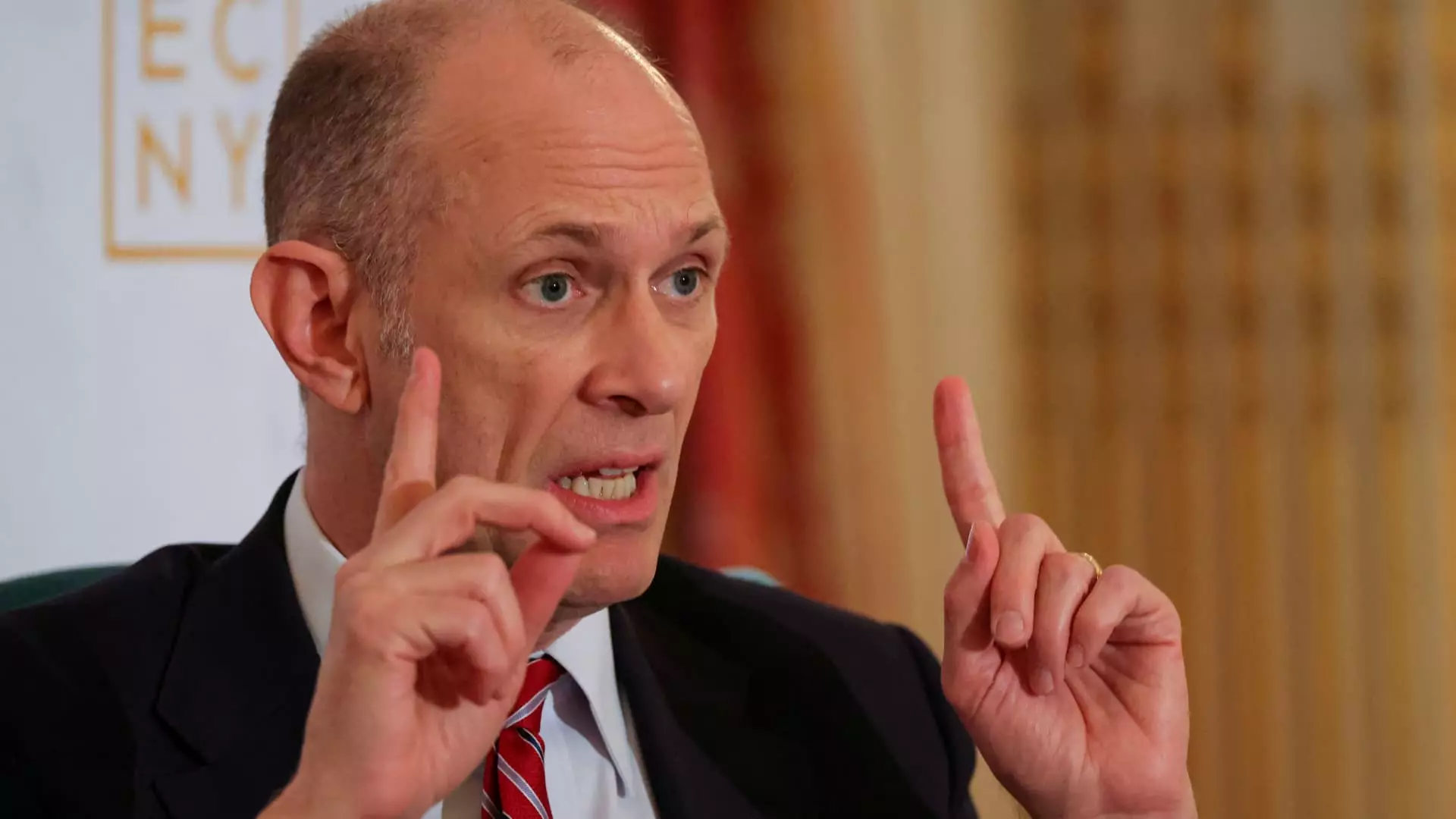In an era where economic stability hangs by a thread, the latest tariff threats from former President Donald Trump are doing more harm than good. Chicago Federal Reserve President Austan Goolsbee’s remarks have captured the uncertainty that these hostile trade policies introduce into our economic framework. The intricacies of monetary policy become extraordinarily complex when the ground beneath them is shaken by unpredictable tariff announcements. While Goolsbee has maintained a hopeful outlook regarding the trajectory of interest rates moving forward, his recent cautionary tones reflect a deeper discontent regarding the chaotic impact of these trade wars.
The very mention of “50% tariffs on products from the European Union” signals a disloyalty to economic principles. One must ask: what does this achieve other than to unsettle markets? Tariffs, by their nature, induce inflation and diminish purchasing power—two aspects consumers already despise. The implications of soaring prices on common goods, coupled with stagnant wages, are dire; it is a dangerous juggling act that threatens to push us into stagflation, a situation usually reserved for economic crises.
Inflation and Employment: The Fed’s Tightrope Walk
When the entire nation holds its breath at the whims of tariff policies, it becomes clearer why Goolsbee expressed reservations about committing to future interest rate cuts. As an essential component of the Federal Open Market Committee, he finds himself balancing a precarious tightrope. Interest rates often react to economic conditions, which in turn are influenced by trade policies. With every tweet or public statement from Trump, it feels like the target shifts, and Goolsbee recognizes that the Fed must tread carefully.
The delicate nexus between inflation and employment is particularly troubling. The central bank, which operates with the dual mandate of maximizing employment and stabilizing prices, now faces the distortion of these objectives due to external factors like tariffs. If trade policies create a surge in prices while employment figures remain stable, Goolsbee’s core concerns about stagflation gather weight. Notably, when central bankers display this kind of anxiety, it foreshadows growing economic disarray.
Global Implications of Localized Decisions
The rumbles from Washington resonate globally. Goolsbee’s insights give rise to a larger reflection: how many economies are swayed by the policies of one individual? The repercussions of elevating tariffs are not incidental; they provoke retaliatory measures from other nations, leading to a trade war that could reign over global markets. The interconnectedness of economies is no longer a mere fact; it’s a reality that shapes the destinies of millions.
Take the case of Apple Inc., a titan that operates amidst these turbulent waters. The outright imposition of a 25% tariff on iPhones not made in the United States is more than just a localized price increase; it’s a convoluted message to global markets about America’s priorities. In pursuit of a competitive edge, we risk squandering the very essence of free trade that has propelled economies forward for decades. As Goolsbee pointed out, while the effects of a pricier smartphone may be negligible overall, the implications of rising costs across various sectors could accumulate, elevating inflationary pressures.
Finding Clarity Amidst Chaos
Goolsbee’s call for clarity is vital. The uncertainty brought on by erratic trade policies translates into hesitance in both consumer spending and business investment. The question remains—how long can we afford to wait for that clarity? Goolsbee himself has advised that interest rates may find themselves lower this time next year, barring any drastic policy changes. While his optimism is commendable, it also raises concerns about the potential procrastination embroiled in the fog of tariff threats.
The Federal Reserve does not operate in a vacuum. Any miscalculation in assessing the repercussions of Trump’s policies could result in grave errors in judgment. The Fed’s previous track record suggests caution, but in an environment rife with unpredictable political maneuvering, the stakes have never been higher. It is imperative that America’s leaders reevaluate the ramifications of their fiscal decisions, understand the fragile nature of economic sentiment, and strive for a coherent policy that fosters growth rather than volatility.
In light of all this, one can only hope that Goolsbee, alongside his fellow policymakers, can navigate these tumultuous seas with foresight and wisdom, steering the U.S. toward a more stable economic future, away from the choppy waters of randomness and reactivity.

